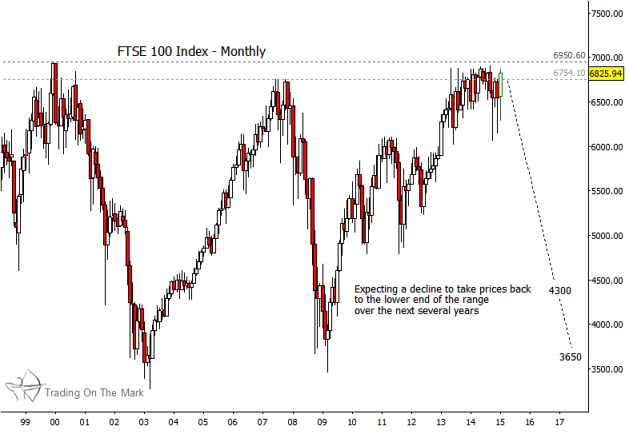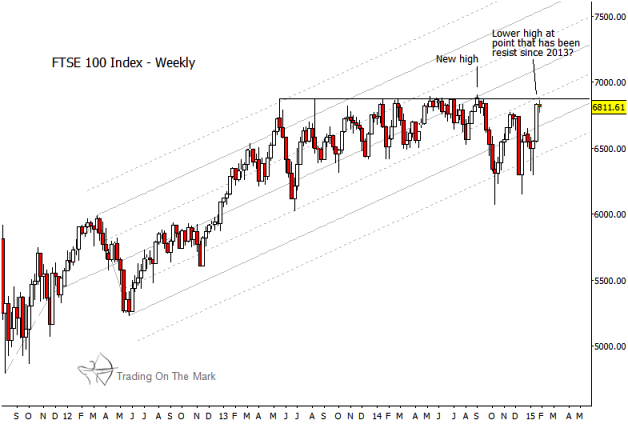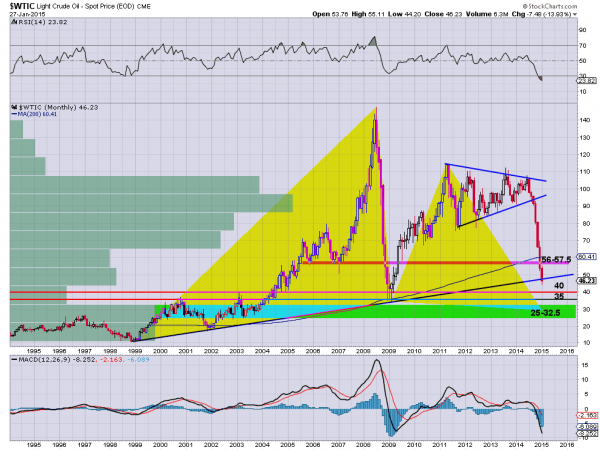My liege, and madam, to expostulate
What majesty should be, what duty is,
What day is day, night night, and time is time,
Were nothing but to waste night, day, and time;
Therefore, since brevity is the soul of wit,
And tediousness the limbs and outward flourishes,
I will be brief. Your noble son is mad. . . .
What majesty should be, what duty is,
What day is day, night night, and time is time,
Were nothing but to waste night, day, and time;
Therefore, since brevity is the soul of wit,
And tediousness the limbs and outward flourishes,
I will be brief. Your noble son is mad. . . .
-Polonius, Hamlet (Act II, scene II)
On Friday Izabella Kaminska wrote about Denmark in "Is the DKK the new CHF?":
It’s been a long time since so many developed central banks were tested by free market forces. And free market forces aren’t finished yet.And all I could think of was: "Where are the Hamlet references?"
Hot on the heels of the SNB giving up on its euro ceiling policy, the market is zoning in on the Danish central bank and its ability to maintain its euro-peg....
I mean come on, Polonius and the gang--including the "Prince of Denmark" (not to be confused with HRH Freddie)--were made for this.
"Something is rotten in the state of Denmark."
- Marcellus to Horatio (Act I, Scene IV)
With NIRP raging in the Eurozone and over €1.5 trillion in European government bonds trading with negative yields, many were wondering when any of this perverted bond generosity will spill over to other debtors, not just Europe's insolvent governments (who can only print negative interest debt because of the ECB's backstop that it will buy any piece of garbage for sale in the doomed monetary union). In fact just earlier today we, rhetorically, asked a logical - in as much as nothing is logical in the new normal - question:
Who will offer the first negative rate mortgage
— zerohedge (@zerohedge) January 30, 2015
Little did we know that just minutes after our tweet, we would learn that at least one place is already paying homeowners to take out a mortgage. That's right - the negative rate mortgage is now a reality.
Thanks of Mario Draghi's generosity with "other generations' slavery", and following 3 consecutive rate cuts by the Danish Central Bank, a local bank - Nordea Credit - is now offering a mortgage with a negative interest rate! This means, according to DR.dk, that Nordea have had to pay instead of charging interest to to a handful of customers, says housing economist at Nordea Kredit, Lise Nytoft Bergmann for Finance.
"Neither a borrower nor a lender be; For loan oft loses both itself and friend, and borrowing dulls the edge of husbandry."
-Polonius to Laertes (Act I, Scene III)
From DR, google-translated:
The interest rate has balanced around 0 in a level between minus 0.03 percent plus 0.03 percent. Most have paid a modest positive interest rate, but there are so few who have had a negative rate. It is quite an unusual situation, says Lise Nytoft Bergmann.It is residential customers who have chosen to stick with F1-loan that now benefit from the negative interest rate. F1 loan form has otherwise been strong returns in recent years in favor of fixed interest loan.Although interest rates are negative, it is not something that can be felt by customers as contributions and other costs continue to be paid. In turn, interest will be deducted from the contribution.Precisely because it is an unusual situation, Nordea Kredit's IT systems are not geared to the situation when the computers are only used to collect interest.Lise Nytoft Bergmann says that there is no cause for concern, and that the new situation can be handled, "but sometimes we have to use duct tape and paste."
This is just the beginning: according the Danish media outlet, as a result of variable-refinancing, as recently as a week from now "a greater share of customers could have a negative rate."Mortgage Denmark is one of the mortgage banks, where F1 rate also is close to zero, and here you are very excited about the upcoming negotiations, says Christian Hilligsøe Heinig, chief economist of the Mortgage Denmark....
"Though this be madness, yet there is method in't."
Polonius, aside to audience (Act II, Scene II)
....And just like that, first in Denmark, and soon everywhere else in Europe, a situation has now emerged where savers who pay the bank to hold their cash courtesy of negative deposit rates, are directly funding the negative interest rate paid to those who wish to take out debt. In fact, the more debt the greater the saver-subsidized windfall....MORE
"That it should come to this!"
-Hamlet (Act I, Scene II)

























posted by beagle at 7:23 AM on January 28 [2 favorites]